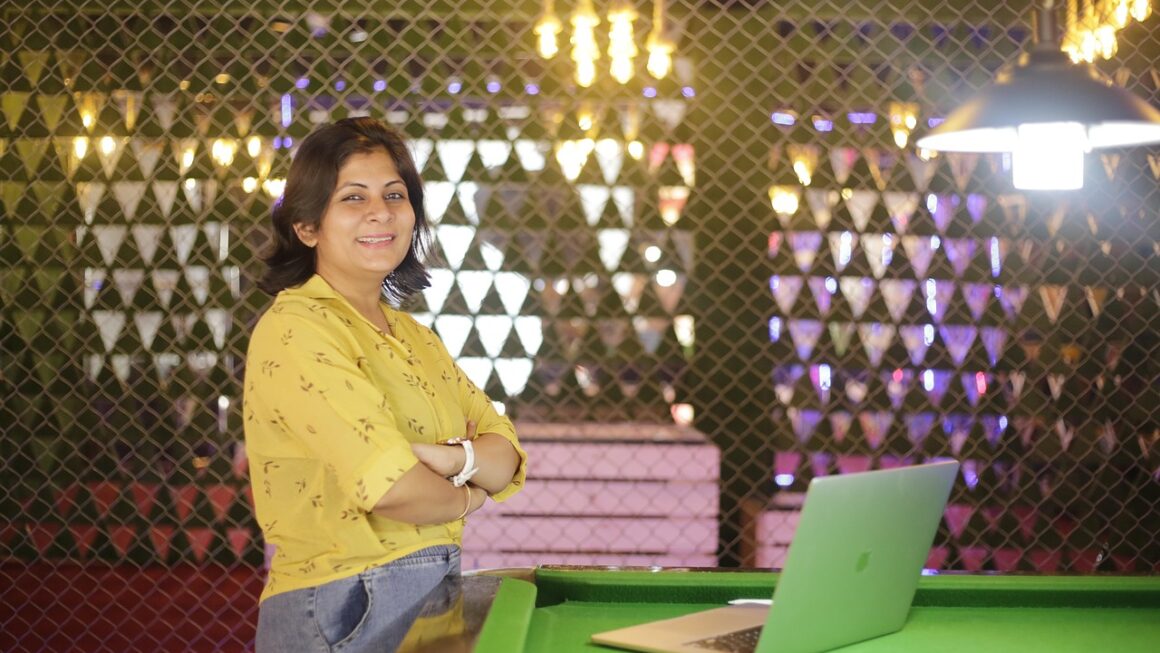The art world is undergoing a seismic shift. The rise of artificial intelligence (AI) has opened up new avenues for artistic creation, sparking both excitement and debate. AI-generated art, once relegated to experimental corners, is now increasingly finding its way into galleries, online marketplaces, and even private collections. But how does the sale of AI art actually work, and what are the factors influencing its value and legality? This post delves into the fascinating and complex landscape of AI art sales, exploring the platforms, the controversies, and the future of art in the age of algorithms.
Understanding the AI Art Market
What is AI-Generated Art?
AI-generated art refers to artworks created using artificial intelligence algorithms. These algorithms, often based on neural networks, can learn from vast datasets of images, styles, and techniques. They can then generate entirely new images, modify existing ones, or even create animations and interactive art experiences. Different AI models produce distinct results, influencing the aesthetic and style of the final piece. Examples include:
- GANs (Generative Adversarial Networks): These networks pit two AIs against each other – one generates images, and the other tries to identify them as fake. This adversarial process results in highly realistic and creative outputs.
- Diffusion Models: These models add noise to an image and then learn to reverse the process, creating new images from the “noise.” They are known for their ability to generate high-quality and detailed artwork.
- Style Transfer: AI algorithms can transfer the style of one image (e.g., Van Gogh’s “Starry Night”) to another (e.g., a photograph of a landscape).
Market Size and Growth
The AI art market is still relatively nascent, but it’s experiencing rapid growth. While precise figures are difficult to obtain, estimates suggest a market value in the tens of millions of dollars, with projections indicating significant expansion in the coming years. The NFT boom has undoubtedly fueled the interest in AI art, providing a convenient way to tokenize and trade these digital creations. However, the market extends beyond NFTs, encompassing print sales, commissions, and licensing agreements.
Key Players in the Market
Several key players are shaping the AI art market:
- AI Art Generators: Platforms like Midjourney, DALL-E 2, Stable Diffusion, and Jasper Art are the tools used by artists to create AI-generated artworks. These platforms offer different features, pricing models, and creative capabilities.
- NFT Marketplaces: Platforms like OpenSea, Rarible, and Foundation are used to sell AI art as NFTs. These platforms provide a secure and transparent way to trade digital assets.
- Art Galleries and Auction Houses: Some galleries and auction houses are starting to exhibit and sell AI-generated art, bringing it into the traditional art world.
- Independent AI Artists: A growing community of artists are specializing in creating AI-generated art and selling their works directly to collectors.
Selling AI Art: Platforms and Strategies
NFT Marketplaces: A Digital Canvas
NFT marketplaces are currently the most popular venue for selling AI-generated art. These platforms offer several advantages:
- Tokenization: NFTs allow artists to tokenize their digital artworks, creating unique and verifiable digital assets.
- Provenance: NFTs provide a transparent and immutable record of ownership and transaction history, which is crucial for establishing authenticity and value.
- Global Reach: NFT marketplaces connect artists with collectors from all over the world, expanding their potential audience.
- Royalties: NFTs can be programmed to automatically pay royalties to the artist on secondary sales, providing a sustainable income stream.
Example: An artist uses Midjourney to create a series of surreal landscapes. They then mint these landscapes as NFTs on OpenSea, setting a price of 0.1 ETH per NFT and a 10% royalty fee. When a collector buys the NFT and later resells it, the artist automatically receives 10% of the resale price.
Traditional Galleries and Auctions
While NFTs dominate the digital realm, traditional galleries and auction houses are increasingly recognizing the value of AI art. These institutions offer:
- Curatorial Validation: Galleries provide curatorial expertise and validation, which can significantly increase the perceived value of AI art.
- Exposure to a Wider Audience: Galleries and auction houses can expose AI art to a broader audience of art collectors, including those who may not be familiar with NFTs.
- Physical Display: Galleries provide a physical space to display AI art, allowing collectors to appreciate the artwork in person.
Example: In 2018, Christie’s auctioned off “Edmond de Belamy,” an AI-generated portrait, for $432,500, a significant moment in the recognition of AI art within the traditional art world. This event signaled a growing acceptance of AI as a legitimate artistic tool.
Direct Sales and Commissions
Artists can also sell their AI-generated art directly to collectors through their own websites, social media platforms, or online art marketplaces. This approach allows artists to:
- Maintain Control: Artists have complete control over pricing, branding, and the sales process.
- Build Relationships: Direct sales allow artists to build personal relationships with collectors, fostering loyalty and repeat business.
- Offer Custom Commissions: Artists can offer custom AI art commissions, creating unique artworks tailored to the specific needs and preferences of their clients.
Example: An artist creates a website showcasing their AI-generated portraits. They offer commissions for personalized AI portraits, where clients provide photos and stylistic preferences, and the artist uses AI to create unique artworks based on these inputs. The artist uses a platform like Shopify or Etsy to process payments and manage orders.
Pricing and Valuation of AI Art
Factors Influencing Price
Determining the value of AI-generated art is a complex process, influenced by several factors:
- Aesthetic Quality: The visual appeal, originality, and technical skill evident in the artwork are crucial determinants of value.
- Artist’s Reputation: The artist’s recognition, experience, and previous sales history can significantly impact the price of their AI art.
- Rarity: The uniqueness and scarcity of the artwork, especially in the NFT space, can increase its value. Limited edition releases or one-of-a-kind pieces command higher prices.
- Technological Innovation: Artworks that demonstrate innovative uses of AI technology or push the boundaries of what’s possible can be highly valued.
- Market Trends: The overall demand for AI art, as well as prevailing trends in the art market, can influence prices.
- Historical Significance: Artworks that are considered milestones in the development of AI art or that have historical significance can be highly sought after.
Establishing a Price Point
Here are some practical tips for pricing AI art:
- Research the Market: Analyze the prices of similar AI-generated artworks on NFT marketplaces and in galleries.
- Consider Production Costs: Factor in the cost of using AI art generators, as well as any additional expenses such as hosting fees or marketing costs.
- Value Your Time: Account for the time and effort you invested in creating the artwork, including the time spent learning how to use AI tools and refining the final product.
- Start Low and Increase Gradually: Begin with a lower price point to attract initial buyers and gradually increase prices as your reputation grows.
- Offer Limited Editions: Create limited editions of your artworks to increase their perceived value and scarcity.
The Role of Provenance
Provenance, the history of ownership and creation of an artwork, is critical for establishing authenticity and value. For AI art, provenance includes:
- Algorithm Used: Specifying the AI algorithm used to create the artwork (e.g., Midjourney, DALL-E 2).
- Input Data: Describing the data used to train the AI model, if applicable.
- Artist’s Involvement: Detailing the artist’s role in the creation process, including any manual editing or modifications.
- Minting Information: Providing information about the NFT minting process, including the date, platform, and transaction ID.
Copyright and Legal Considerations
Ownership and Copyright
The question of who owns the copyright to AI-generated art is a complex legal issue that is still being debated. Currently, copyright law generally requires human authorship for a work to be copyrightable. The U.S. Copyright Office has stated that AI-generated works without significant human input may not be eligible for copyright protection. However, the specific circumstances of each case will be considered, and the extent of human involvement in the creative process will be a key factor.
Terms of Service of AI Platforms
It’s crucial to understand the terms of service of the AI art generators you use. These terms often specify the ownership and usage rights associated with the artworks created using their platforms. Some platforms may grant you full ownership of the generated images, while others may retain certain rights or require you to give them credit. Always review the terms carefully before selling AI art created using these tools.
Ethical Concerns
Ethical considerations surrounding AI art include:
- Bias: AI models can inherit biases from the data they are trained on, potentially leading to discriminatory or offensive outputs.
- Attribution: It’s important to properly attribute the role of AI in the creation of artworks and to avoid presenting AI-generated art as entirely human-made.
- Job Displacement: The rise of AI art could potentially displace human artists, raising concerns about the future of creative work.
- Copyright Infringement: The use of copyrighted images or styles to train AI models can raise concerns about copyright infringement.
Conclusion
The sale of AI-generated art represents a dynamic and evolving landscape. While challenges remain regarding copyright, valuation, and ethical considerations, the opportunities for artists and collectors are undeniable. Understanding the platforms, pricing strategies, and legal aspects is essential for navigating this exciting new frontier. As AI technology continues to advance, we can expect even more innovative and groundbreaking art to emerge, further blurring the lines between human and artificial creativity. Artists should focus on mastering the tools, understanding the legal landscape, and contributing ethically to this evolving space. Collectors should research thoroughly, support responsible AI art creation, and appreciate the unique qualities of this emerging art form.




